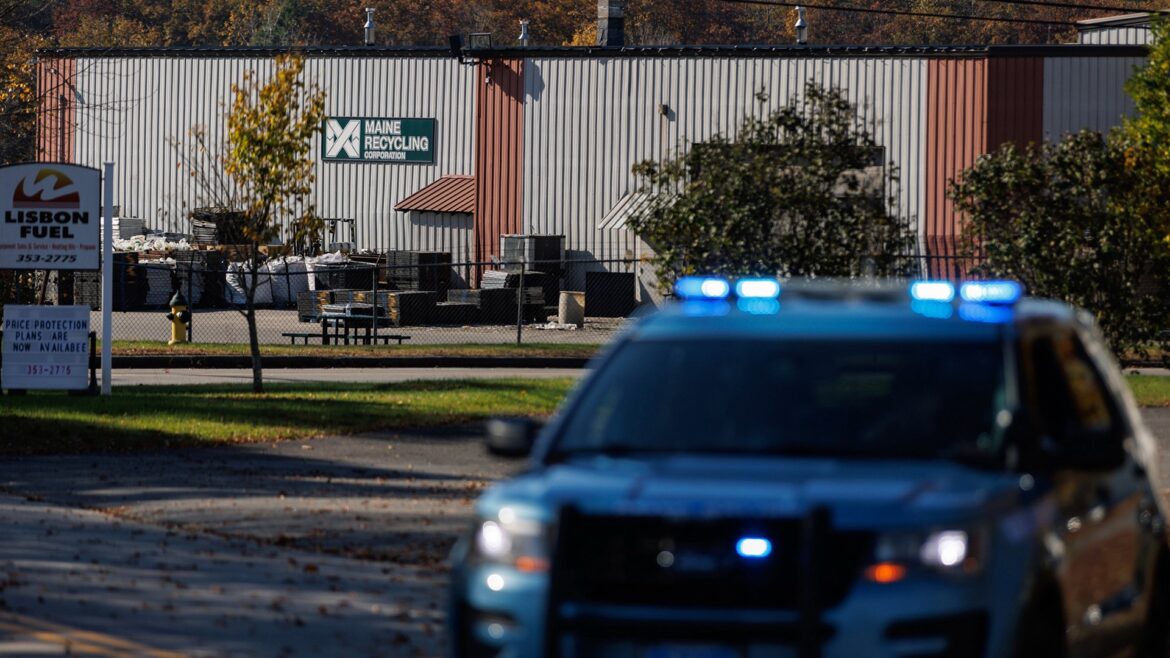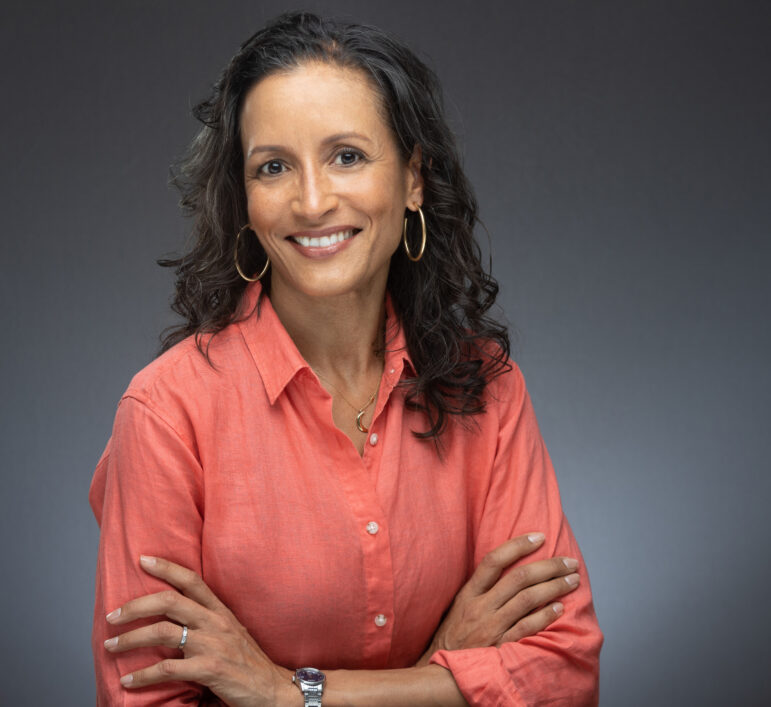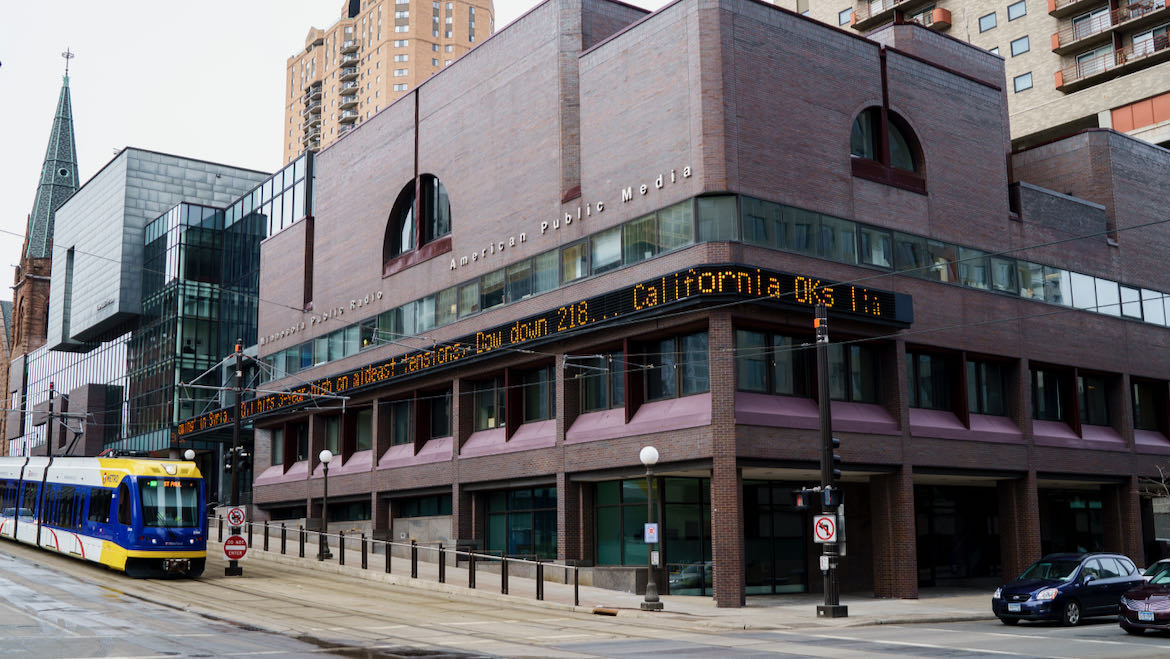Maine Public, ‘Frontline’ team up for three-pronged project about Lewiston shooting

Brianna Soukup / Portland Press Herald
A section of road leading to the Maine Recycling Corp. in Lisbon, Maine, where the body of shooter Robert Card was found is blocked off by police Oct. 28, 2023.
In 2023, there were more than 600 mass shootings in the U.S., the largest of which took place in Lewiston, Maine. That incident, committed by Army Reserve Sgt. Robert Card, left 18 people dead, 13 wounded and an entire community deeply shaken.
A year later, a new project from Maine Public, the Portland Press Herald and Frontline is exploring whether that shooting could have been prevented.
Assembled with guidance and financial support from the Frontline Local Journalism Initiative, Breakdown: Turning Anguish into Action is a six-episode podcast series that uses interviews, archival audio and in-depth reporting to highlight missed points of intervention in Card’s life, as well as the particular circumstances that may have contributed to the level of devastation. Individual episodes focus on the role of guns in Maine politics, how the shooting affected victims, and the missed opportunities local and military officials had to prevent it. One examines how the shooting specifically affected the deaf and hard-of-hearing community, which lost four members at the second location Card visited.
Each episode is equal parts heart-wrenching and frustrating, with a good amount of political buck-passing around who should or could have intervened throughout Card’s slide toward violence. While there’s no way to know whether intervention could have stopped the shooting, it’s clear that the people and organizations who were around Card before the act wonder what might have been.
With investigative reporting by the Portland Press Herald accompanying the podcast, as well as a new episode of Frontline out Tuesday that follows journalists at both outlets, Breakdown is the result of thousands of hours of boots-on-the-ground reporting, as well as robust collaboration between newsrooms.
Breakdown was born early this year when Storyboard Studios’ James Blue and Bronwyn Berry approached Frontline with a proof-of-concept video. Frontline EP Raney Aronson-Rath liked it and showed it to Erin Texeira, a Frontline senior editor who leads the show’s Local Journalism Initiative, asking whether she thought the project could be made with a local partner.
Storyboard and Texeira then reached out to the Portland Press Herald, which signed onto the project. Within weeks, Maine Public also came on board, a natural fit since Mark Simpson, the station’s news and public affairs director, says it was already independently considering how they would continue covering the event.

Texeira says she’s always looking for local stories with national resonance for the initiative and that typically, “one of the things that our local partners need the most guidance on is how to frame their local stories in a national context, or how to pull back a little bit and explain some more basic things that might be obvious to local readers and speak to the national audience just a bit more.” She says the Initiative also tries to focus on news deserts and smaller markets where outlets may have seen shrinking audiences or newsrooms and where a bit of support can make a world of difference.
For that reason, Frontline both came on board to release the film and to help shepherd the collaboration, stepping in first with financial support. “The first thing we do,” Texeira says, “is offer financial resources. Typically, we’ll pay a reporter’s salary or part of an editor’s salary, or maybe part of a photographer’s, and we’ll pay FOIA fees and travel expenses.”
The Initiative also brings expertise on subjects like navigating tricky records requests or presenting reporting in new forms. In the case of the Breakdown project, that meant helping the Press Herald craft a digital presentation to accompany one of its stories about the shooting, both by paying for part of the computer program necessary for its creation and connecting the newsroom with Frontline’s digital experts to offer guidance.
“The idea is that we can provide a ton of support, but we also want to leave the newsroom with very concrete skills that they can continue to use after the partnership is over,” Texeira says.
When Frontline is engaged in an Initiative partnership, it also holds weekly meetings to talk through challenges around reporting, what additional resources are needed and how the team can better work together. For Breakdown, this meant setting up a system of reciprocal reporting across platforms, with Press Herald staff reporter John Terhune shifting from broader beats into reporting exclusively on the shooting. Terhune tackled issues of mental and brain health, as well as the police response. Maine Public State House Bureau Chief Steve Mistler also worked on the project, diving into Maine’s gun laws and culture.
Maine Public Deputy News Director Susan Sharon also reported several episodes of the podcast, adding her lived experience as a resident of the Lewiston-Auburn area.
“Even if you’ve been chasing one subject for three or four months and somebody else takes a stab at it and gets it, that’s not a bad thing,” says Portland Press Herald Managing Editor Julia Arenstam.
“We’re all rowing in the same boat,” adds Sharon.
Perhaps most importantly for a project about such a traumatic event, the project’s participants also collaborated on interviews, figuring out who the best person to approach might be, what answers they might all want, and how they could best craft their questions.The team also shared interview transcripts and audio, meaning that they only had to put victims or family members through reliving the incidents once.
New frontiers
For Frontline‘s LJI, working on a three-pronged project was a new experience but one that Texeira hopes pays dividends.
“A film can’t go as deep as newspaper articles or a podcast, but we’re all trying to explore the aftermath and trying to unpack how all these things added up to this tragedy,” says Texeira. “What I hope is that the film will prompt people to go back to the podcast or to the stories if they want to learn more, so that the assets are really talking to each other. We think audiences want that.”
Maine Public and Frontline are also taking special pains to reach out to the deaf and hard-of-hearing community, which was deeply affected by the shooting. Maine Public has made sure to have ASL interpretation at all its events surrounding the podcast, and Frontline worked with Donna Danielewski, GBH’s executive director of accessibility, to figure out how to produce American Sign Language video interpretations of all six episodes of the Breakdown podcast after learning that written transcripts aren’t considered to be entirely accessible across the deaf community.
While Texeira says she’s unsure whether Frontline will have the resources to provide this kind of interpretation for all future projects, she says working on the ASL project has been an eye-opening experience. “It feels a bit like we’re paving the road while we make it,” she says, noting that while some children’s shows offer ASL interpretations, few if any investigative or narrative podcasts do, despite the fact that 3% of Americans are deaf or hard of hearing.
“I think we all can do so much better,” Texeira adds. “Maybe these episodes can serve as a little inspiration for other folks.”
Beyond ‘Breakdown’
Though the Breakdown project is winding down with the Frontline special and the last few episodes of the podcast airing in the next few weeks, the Maine Public and Portland Press Herald teams say this is only the beginning of their collaboration.
“This has been incredibly rewarding, but I think what it’s illustrated most is the value of having a partner that’s local,” says Sharon. “It’s not an outsider who’s trying to parachute into the story. You need a partner who knows the community and who’s working on the story intensely with multiple reporters in their own newsroom. Having someone like that who understood everything and who was invested in the story the same way that we were gave us all more people power with which to work.”
It can be beneficial for newsrooms’ bottom lines, too. Texeira says that while audiences have been seeking out alternative news sources in recent years, there’s strong evidence that deep investigative reporting is what can bring people back. “On Facebook, they can find out that the gas station closed and the local football team won, but that’s not where accountability work is happening,” she explains. “When local newsrooms dig deep, the data shows that people do go back to those publications and outlets and subscription rates tend to jump.”
Through projects like Breakdown, audiences not only gain a sense of recognition but also an opportunity to work through issues together. In Maine, where being hard-working and a bit sedate is part of the social fabric, the Press Herald’s Arenstam says getting through the Lewiston trauma has sometimes been viewed as a nuisance rather than an opportunity.
“There’s a certain culture or tradition of pulling yourself up by your bootstraps here and getting back to life, like, ‘The past is the past, and let’s not relive this,’” she says. “But there are people here who really care about this issue, and they want to see us dive into these larger questions. They’re glad that we’re doing this project, and a lot of people in our newsroom are, too.”
Corrections: A previous version of this story incorrectly said that Maine Public State House Bureau Chief Steve Mistler shifted to working exclusively on Breakdown. It also incorrectly said that Storyboard Studios’ James Blue and Bronwyn Berry approached the Portland Press Herald and Maine Public about working on a film about the shooting. They approached Frontline, then Storyboard and Texeira reached out to the Herald. The previous version also said that working on a three-pronged project was a new experience for Frontline. It was a new experience for the LJI but not Frontline.







kudos to this team for exploring an important issue that impacts all of our lives. as a colleague working in mental and behavioral health care, i have enjoyed the podcast and look forward to hearing more about this work.